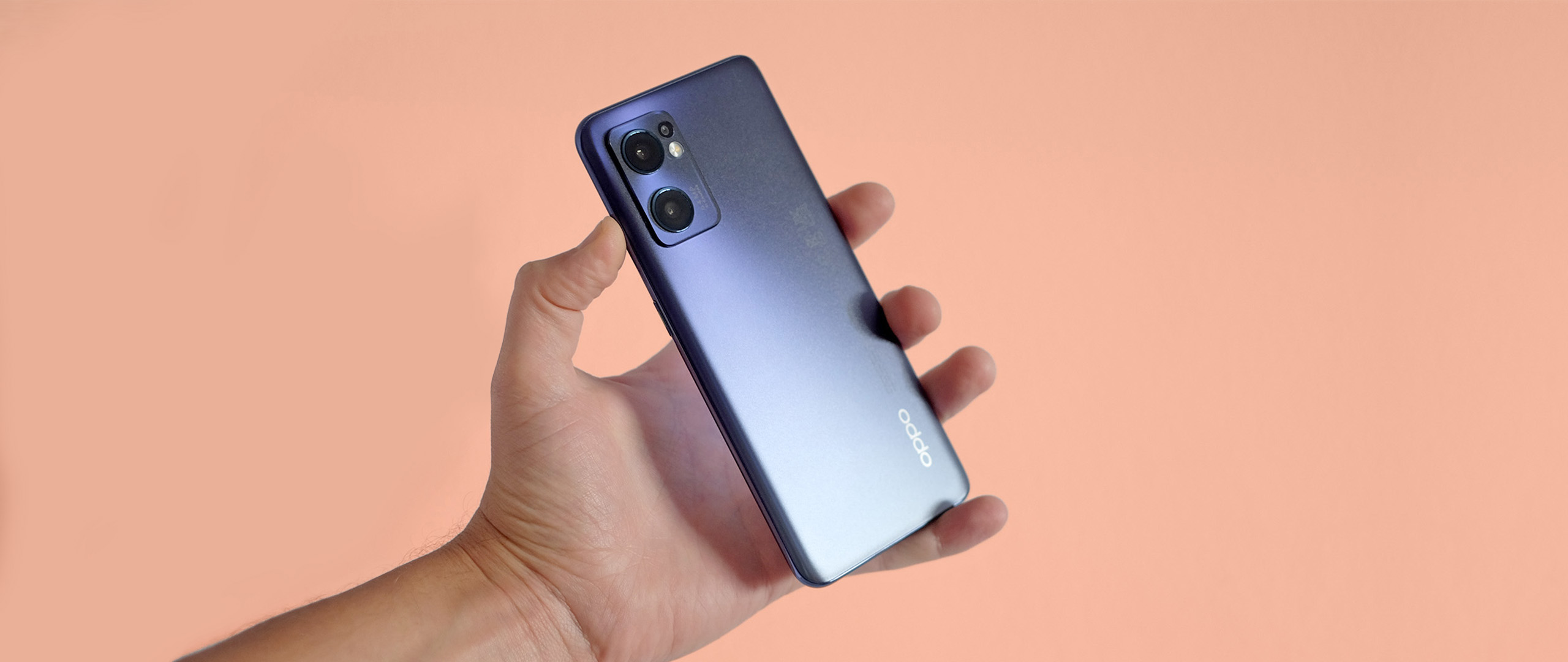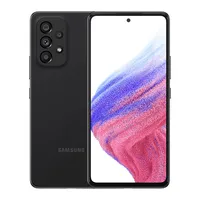TechRadar Verdict
The Oppo Find X5 Lite isn’t a paragon of value or hugely powerful, but fast charging and a slimmer frame than most lend it an easy-going appeal for those less fussed about the finer points of the tech inside.
Pros
- +
Slim and easy to handle
- +
Solid primary camera with mostly tasteful image handling
- +
Features a headphone jack and microSD slot
- +
Super-fast charging
Cons
- -
Cheap-feeling haptics
- -
Far more power is available at the price
- -
Mono speaker is harsh at higher volumes
- -
Realme and OnePlus offer better value
Why you can trust TechRadar
Two-minute review
The Oppo Find X5 Lite is the more affordable alternative to the Oppo Find X5 Pro. Name aside, the two have little in common.
This is a practical mid-range Android with a handful of assets that make it easy to get along with. The Oppo Find X5 Lite isn’t thick or heavy. It charges in a flash and comes with a headphone jack. Its battery life is solid and the main camera does a good job in most situations, even though it doesn’t have top-tier hardware.
If you’re offered an Oppo Find X5 Lite at a good price when it’s time to upgrade your contract, there are few glaring issues to stop you from going ahead. However, it’s a more difficult sell to those planning to buy a phone outright, with much of the top competition coming from Oppo sister brands such as OnePlus and Realme.
The Oppo Find X5 Lite’s video is disappointing: 4K footage is shaky, and the stabilized mode’s footage doesn’t look anywhere near as good, because it uses a secondary camera. Note, too, that the device’s plastic back and sides make it feel cheaper than the OnePlus Nord 2T. The effect is worsened by the low-quality haptics – the phone’s vibration motor effect.

Plenty of handsets at the price offer more power than the Oppo Find X5 Lite. While this won’t be as evident for basic day-to-day use, it’s bad news for gamers – and those looking to get as much phone per dollar as they can.
In addition, the Oppo Find X5 Lite’s speaker can sound brash at higher volumes. All these little issues mount up to make the phone feel like a good upper entry-level Android rather than a top mid-range unit.
However, the concept of value is the main roadblock here. If you find the Oppo Find X5 Lite selling at the right price, its combo of fast charging and a fairly compact frame are likely to be happily received by the less tech-driven phone buyer.
Sign up for breaking news, reviews, opinion, top tech deals, and more.
Oppo Find X5 Lite: price and availability
- Out now
- Costs $499 / £399 / AU$799
The Oppo Find X5 Lite was released in March 2022 as a cheaper alternative to the flagship Find X5 Pro.
As far as we can tell, it also appears to be identical to the Oppo Reno 7 5G. However, the two handsets are unlikely to be sold simultaneously in the same territory.
Currently, there’s only one spec of Oppo Find X5 Lite, comprising 8GB of RAM and 256GB of storage for $499 / £399 / AU$799.

- Value score: 3/5
Oppo Find X5 Lite: design
- Pleasant low-key sparkly finish
- Plastic rear doesn’t feel expensive
- Mono speaker is loud, but can sound harsh
Mid-range phones such as the Oppo Find X5 Lite have a hard time. These days, cheaper devices often look just as expensive from arm’s length and, unlike five years ago, glass rears and metal sides aren’t commonplace even at $500/£400.
The Oppo Find X5 Lite comes with a plastic rear and plastic sides, dressed up through a design process called Oppo Glow. This refers to the sparkly rear finish. It emulates frosted glass; but it’s plastic, and feels like it.
You have a choice of two finishes. The Starry Black finish (on review here) is described as a blue-black gradient, but in a well-lit room it’s more dark blue-to-gray. It’s pleasant and fairly tasteful. Startrails Blue is much brighter, turning purple as it catches the light.
The look and feel of the Oppo Find X5 Lite could easily belong to a cheaper phone. Its display borders are thicker than some, and although well-made, that standard all-plastic shell was never going to truly impress.
However, there are some good points to note. The display glass is Gorilla Glass 5 – not Corning’s best toughened glass, but not too far off. This phone is also fairly narrow, light and slim.

The Oppo Find X5 Lite weighs 173g and is 7.8mm thick. It’s easy to handle by the standards of this price class, and also has a 3.5mm headphone jack. Techies out there may also appreciate the dual-SIM plus microSD card tray, which offers greater flexibility than plenty of far more expensive phones.
There’s no water-resistance rating at all. But at this price you’d typically only see IPX4 anyway, which won’t protect a phone from anything more than rain.
Nevertheless, coming from using phones from the Realme GT 2 series, we find the Oppo Find X5 Lite design slightly disappointing. It has very rudimentary haptics and this is, perhaps surprisingly, a big differentiator in mid-range phones.
It refers to the feel of the vibration feedback when you unlock the phone, press the keypad or receive notifications. The Oppo Find X5 Lite’s vibration is budget-grade.
Its speaker doesn’t impress, either. Sure, it’s loud; but there’s only a single driver on the bottom, and it lacks the bass we’ve heard in cheaper phones. At maximum volume it can sound a little abrasive.
The mono driver and thinner sound are likely side effects of the slim frame. Slender handsets can sound good, but this experience is typically had from phones that cost more. In the Oppo Find X5 Lite’s favor, we quickly grew accustomed to the less than refined tone, and the fact that it can make podcasts audible while you cook is a big plus.
- Design score: 3/5
Oppo Find X5 Lite: display
- 90Hz display, not 120Hz, but this has its benefits
- Peak brightness in sunlight could be higher
- Good color, but Vivid mode misrepresents your photos
The Oppo Find X5 Lite has a 6.43-inch OLED, 2400 x 1080 resolution screen. This is a mid-size display, and plays a big part in keeping the phone reasonably light and easy to use.
It’s a decent OLED panel. You get all the usual associated benefits, such as perfect contrast and ultra-clear off-angle viewing, plus there’s very little tinting of the screen as the phone is tilted. Some OLED panels can appear a bit blue or pinkish at an extreme angle.
Color is great, too. When you first power-up the Oppo Find X5 Lite, it will be set to its default Vivid mode. It's punchy, but not excessively so. There’s also a Natural mode that brings color calibration much closer to the classic sRGB standard.
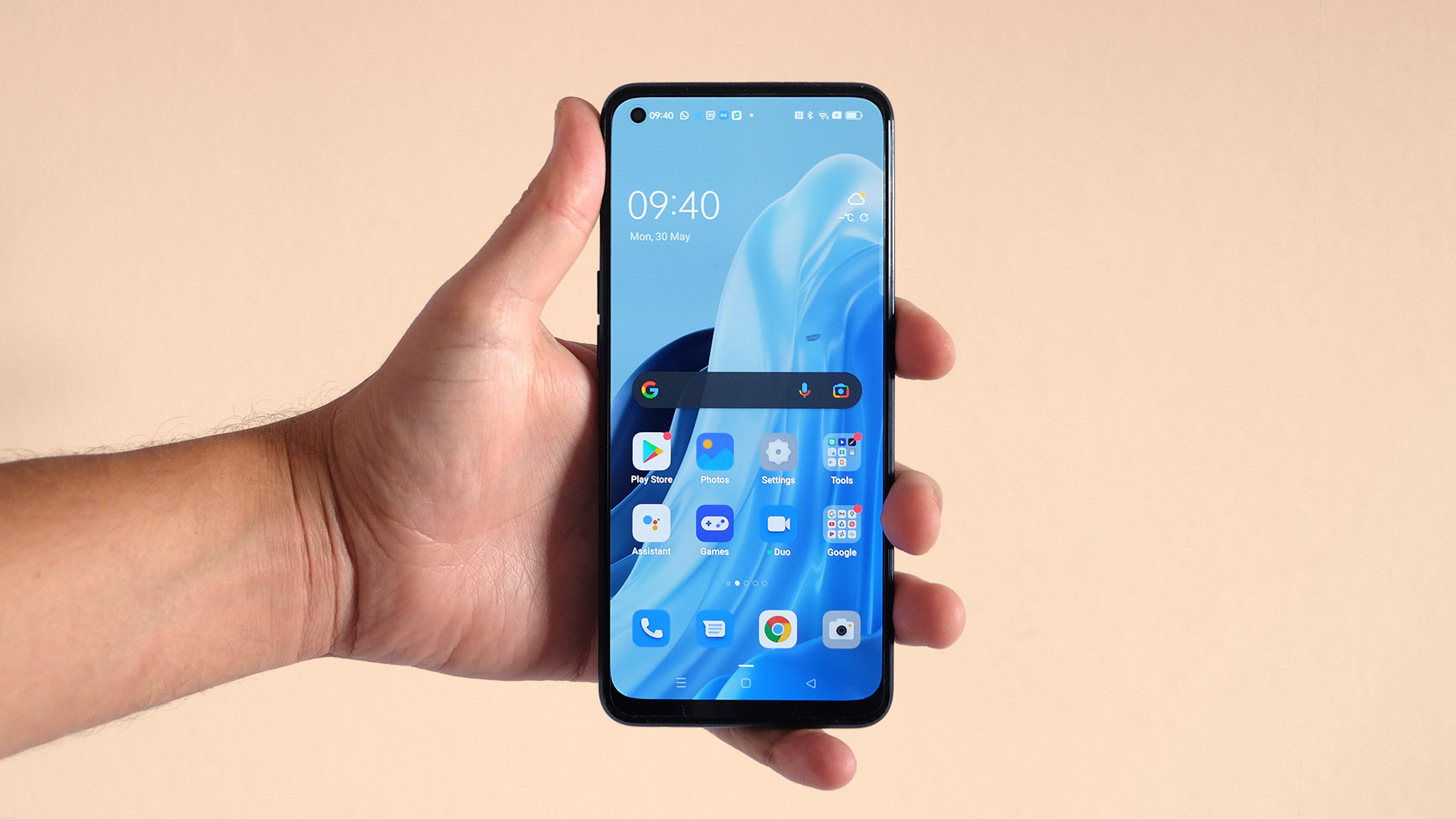
We like both modes. There’s just one problem: the Photo Gallery app doesn’t override the screen profile to show photos as they are. Your images will routinely appear oversaturated in Vivid mode. Transfer them across to a laptop and they’ll appear more accurate – it’s a reason to stick with the more subdued Natural display mode.
Oppo hasn’t pushed up the refresh rate as much as Xiaomi, for example. The Oppo Find X5 Lite has a 90Hz maximum refresh rate, where plenty have 120Hz displays at the price.
For scrolling, 120Hz will make Android look even smoother; but it isn’t a 100% victory for 120Hz. Many of the longest-lasting phones we’ve used over the past 24 months have featured 90Hz displays, and their somewhat lower power consumption also means you have to think less about whether or not to use the high refresh rate mode.
Just okay maximum brightness is less easy to excuse. Like every good mid-range phone, the Oppo Find X5 Lite has a “turbo” high brightness mode that flicks on when you’re in a bright environment, but it’s only just about good enough to compete with direct sunlight. Would we have noticed if we weren’t comparing the Find X5 Lite directly with rivals? Perhaps not. It’s still perfectly okay for use outdoors.
- Display score: 4/5
Oppo Find X5 Lite: cameras
- Largely tasteful image processing
- Powerful HDR, but it can skew photos’ character a little too much
- Poor macro sensor and decent but unremarkable ultra-wide
The Oppo Find X5 Lite comes with three rear cameras and one front camera. Like many phones at the price, and those that are significantly cheaper, only one of the cameras on the back is any good.
The third camera is a 2-megapixel macro, which takes undersaturated and soft images; it’s there to make up the numbers. The Oppo Find X5 Lite ultra-wide has just 8 megapixels of resolution to work with, and its images deliver basic-looking color and soft detail in less optimal light. But unlike the macro, ultra-wide images are at least worth taking, and can look great in strong daylight.
Oppo doesn’t state the sensor the primary 64-megapixel camera uses, but after digging out the sensor dimensions using data-scraping app Hardware Info, the 1/1.97-inch Samsung GW3 is the most likely candidate.
This isn’t a high-end sensor, and we’ve seen pretty mixed results from it in other phones. However, Oppo has done a pretty good job here.
The Oppo Find X5 Lite’s camera takes an even-handed approach to noise reduction and contrast when shooting in fairly even lighting. Texture detail is surprisingly solid, and the phone allows some granularity in relatively flat-looking objects, rather than identifying it as image noise and blasting it into oblivion. This is a classier processing profile than you’ll see in Realme phones.
Green tones in grass and trees look natural, displaying a warmth you won’t see in the lower-end ultra-wide camera. Shots may not immediately “pop” as much as those taken on with the Google Pixel 6 or high-end Samsung, but you can add some of this effect post-shoot by increasing contrast a little.
We first thought the Oppo Find X5 Lite had a major tendency to oversaturate color, but this is largely because of the screen calibration issue mentioned in the Display section of this review.
The Oppo also captures decent – impressive, even – 2x zoom shots, considering they’re captured using the same core information as 1x photos; the Oppo Find X5 Lite doesn’t have an actual zoom lens. Comparing 1x and 2x shots side-by-side, the different approach to processing leads to plenty of additional fine and texture detail that’s lost in the standard 16-megapixel pictures.
There’s no clear giveaway that the 2x shots are digital zooms until you examine the shots more closely on a larger display, which is a great result for a phone without an “optical" zoom.
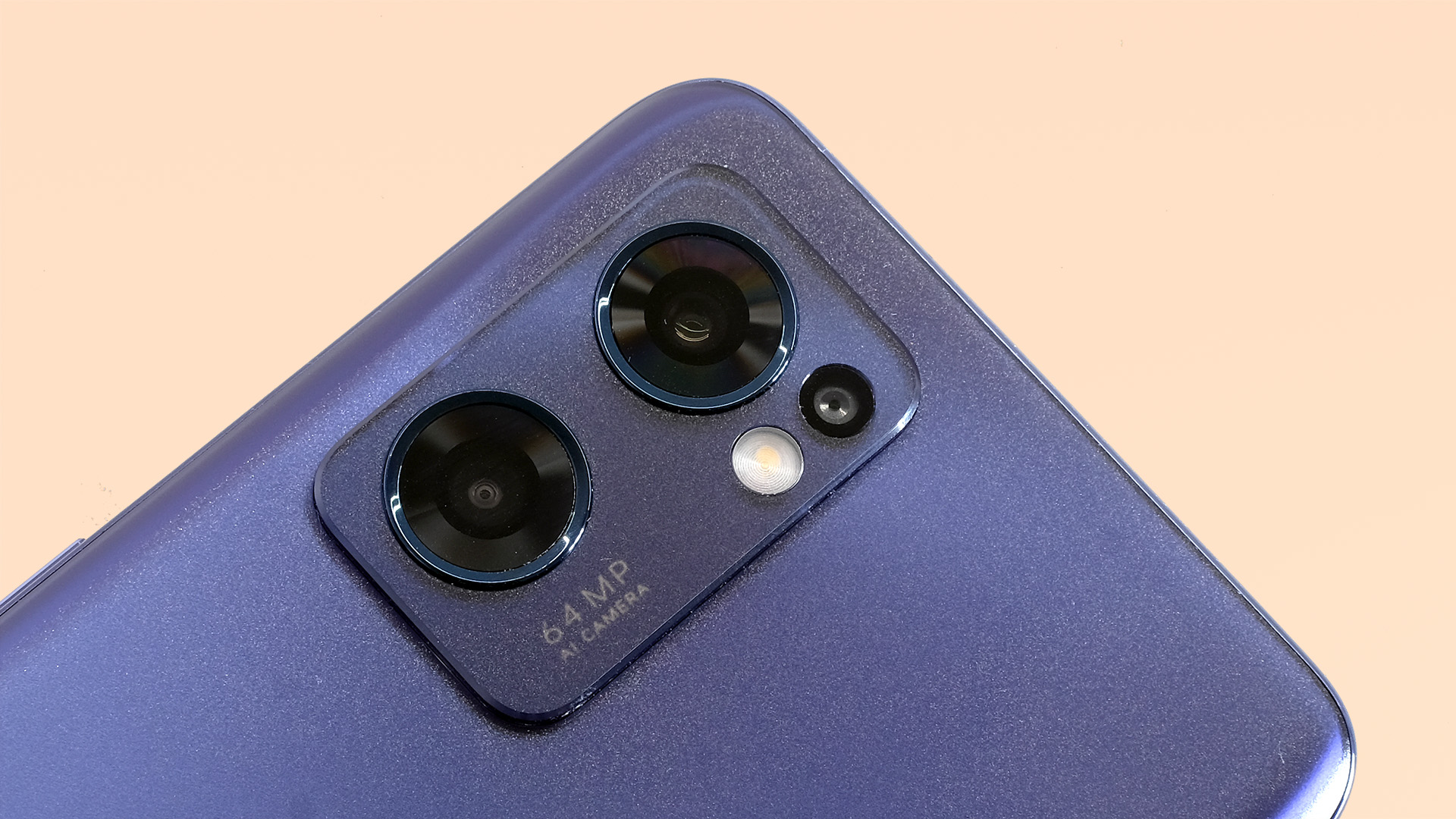
Issues do crop up elsewhere, however. The Oppo Find X5 Lite’s HDR processing does a great job of retaining highlights in clouds while making the foreground appear reasonably bright. However, its HDR tone mapping can lead to their character appearing different to those taken in other conditions.
The phone has a habit of lightening/brightening the mid-tones too much, while leaving the shadows relatively dark. This can impact the realism of images, which is pretty good in most other conditions. To an extent, we’re nitpicking here; until the photos were looked at on a laptop, we mostly only noticed the phone’s rigorous highlight retention in standard photos, which is a wholesale positive.
Another HDR issue is that the Oppo Find X5 Lite can’t retain highlights anywhere near as well at 2x as it does at 1x. This makes sense: HDR merges multiple exposures, and the more detail-seeking style of the zoomed mode will be less forgiving of any slight hand movement between frames.
Note that this phone doesn’t have OIS, optical image stabilization, to make up for it.
Despite this, the Oppo Find X5 Lite captures respectably good images at night – if you use the right mode. Auto shots in low light are poor; but you’ll see a dramatic improvement using the Night mode.
There’s a significant increase in detail, as there is in dynamic range. Images are fuzzier and noisier than the best, but the Oppo Find X5 Lite’s results are solid. Again, though, you do miss OIS on occasion, since the pictures can look a little blurry if you don’t keep your hands fairly still for the required ~2 seconds.
The Oppo Find X5 Lite isn’t great for video, either. You can shoot at 4K, with the picture looking clean, sharp and vibrant in daylight. But it just isn’t that useful because 4K capture is unstabilized, making it look a juddery mess.
In addition, 30fps is the limit at 4K – a restriction of the MediaTek Dimensity 900 processor. If the phone has, as we believe, a Samsung GW3 sensor, it’s capable of 4K/60fps capture.
Video looks much smoother if you engage the Ultra Steady mode, but this appears to switch to using the ultra-wide camera. Detail and color fidelity take a huge hit, and even in daylight, you’ll see blurring of the image in time with footfalls. This is caused by the shutter speed not being fast enough to compensate for the jolting motion. You’ll see a similar effect in low light with a higher-end sensor, but it happens pretty much all the time here.
And selfies? The Oppo Find X5 Lite includes a decent 32-megapixel front camera that uses 4-in-1 pixel binning to let it deal with poor lighting more effectively. While none of the selfies we took were true standard-setting knock-outs, pixel binning allows for more consistent results in changing conditions, and the phone makes good use of HDR to tame backlit scenes.
- Camera score: 4/5
Oppo Find X5 Lite: camera samples














Oppo Find X5 Lite: performance and specs
- Solid day-to-day performance
- Much stronger CPUs are available at the price
- Not the best option for big mobile gamers
The Oppo Find X5 Lite is far from the most powerful phone you can get for this money. It comes with a MediaTek Dimensity 900 CPU – while the Dimensity series is great overall, the middling 900 series is better suited to a cheaper phone than this one.
That said, it’s fast enough to make Android feel responsive. The difference between this phone and either a more expensive model, or one of the truly punch phones for similar money, is mostly confined to the speed at which apps load. And there isn’t a huge disparity. We’d be happy to use the Oppo Find X5 Lite as our everyday phone, in this respect at least.
How does it stack up against the competition? In Geekbench 5, it scores 2154 points (697 per core). This is significantly better than the Samsung Galaxy A53’s 1800-odd, but lower than the Realme GT Master Edition (2880), and a lot lower than the Realme GT2 (3350), which features the flagship Snapdragon 888 CPU.
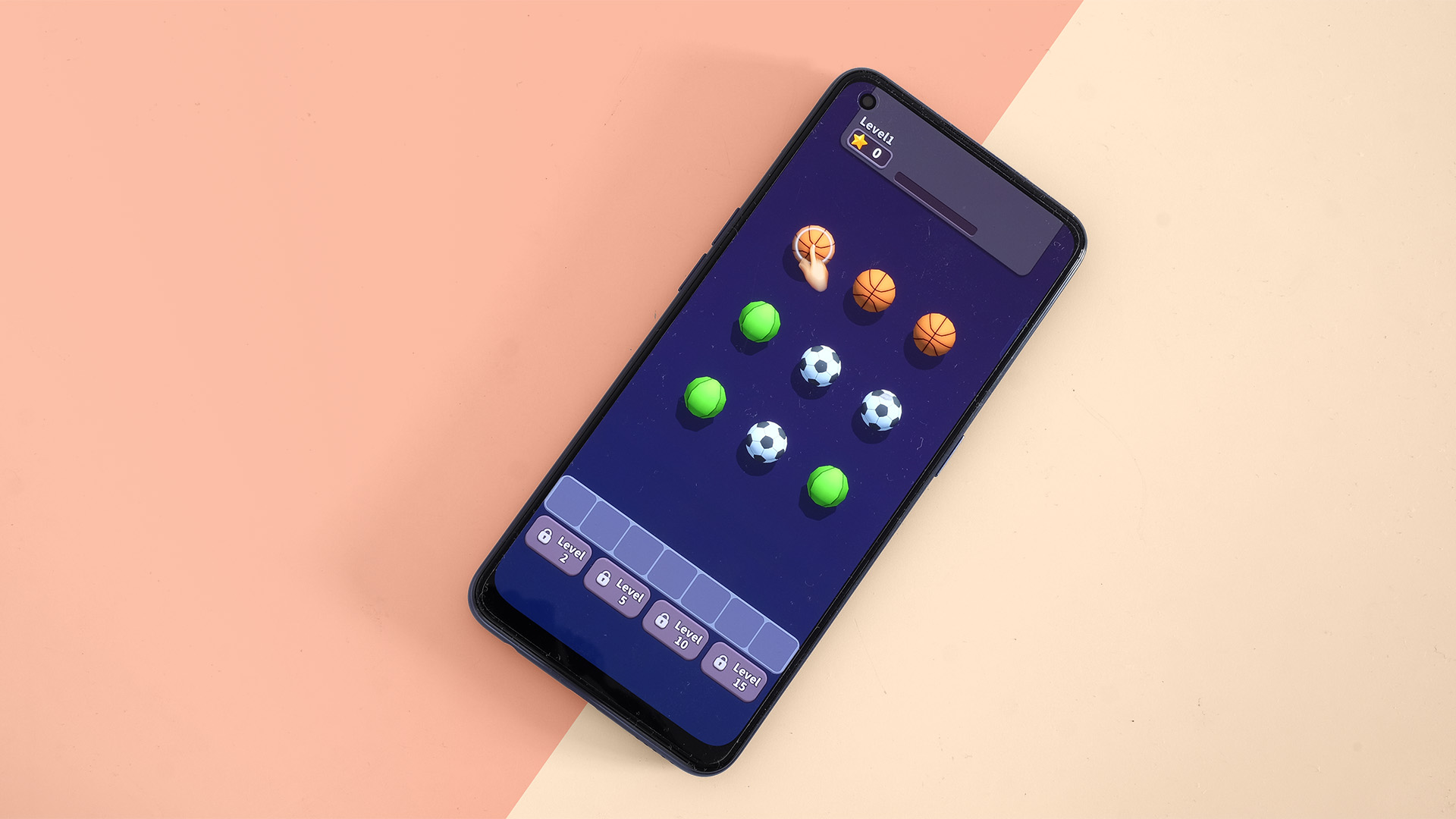
The OnePlus Nord 2T is the handset that shows up the Oppo Find X5 Lite the most, however. It’s slightly cheaper than the Oppo, and its Dimensity 1300 is miles better in both CPU and GPU performance.
The funny part here is that Realme and OnePlus are part of the same group as Oppo. They share the same parent company, telling us that Oppo phones just have less of a focus on “value”.
You see this performance gap play out in games such as Fortnite. The Oppo Find X5 Lite can handle it just fine, but you’re limited to 30fps on the Medium graphics setting. There are also more frame dips than in the Realme GT 2.
It’s no great surprise when you look at a GPU performance benchmark such as 3DMark’s Wild Life: the Oppo Find X5 Lite scores 2024 points; the Realme GT 2 almost three times as much at 5730.
There is a slight benefit, though. The Oppo Find X5 Lite never needs to throttle its performance, and following a 20-minute GPU stress test, it was only slightly warm.
- Performance score: 3/5
Oppo Find X5 Lite: software
- Uses Android 11 at launch
- Largely inoffensive software layer
- ColorOS 12 may appear a bit stiff without visual tweaks
ColorOS 12 is the interface used by the Oppo Find X5 Lite. It runs on top of Android 11 at the time of review, where a few other phones are starting to get Android 12.
That latest version lets you customize some of the colors used in core elements such as drop-down menus, so let’s hope this phone eventually receives the upgrade.
ColorOS 12 has a stiffer style than most, in part thanks to its use of square icons by default, and the limited transparency of the app drawer background. However, it’s inoffensive in the main, and lots of elements – including icon shapes – can be altered with a few taps of the screen.
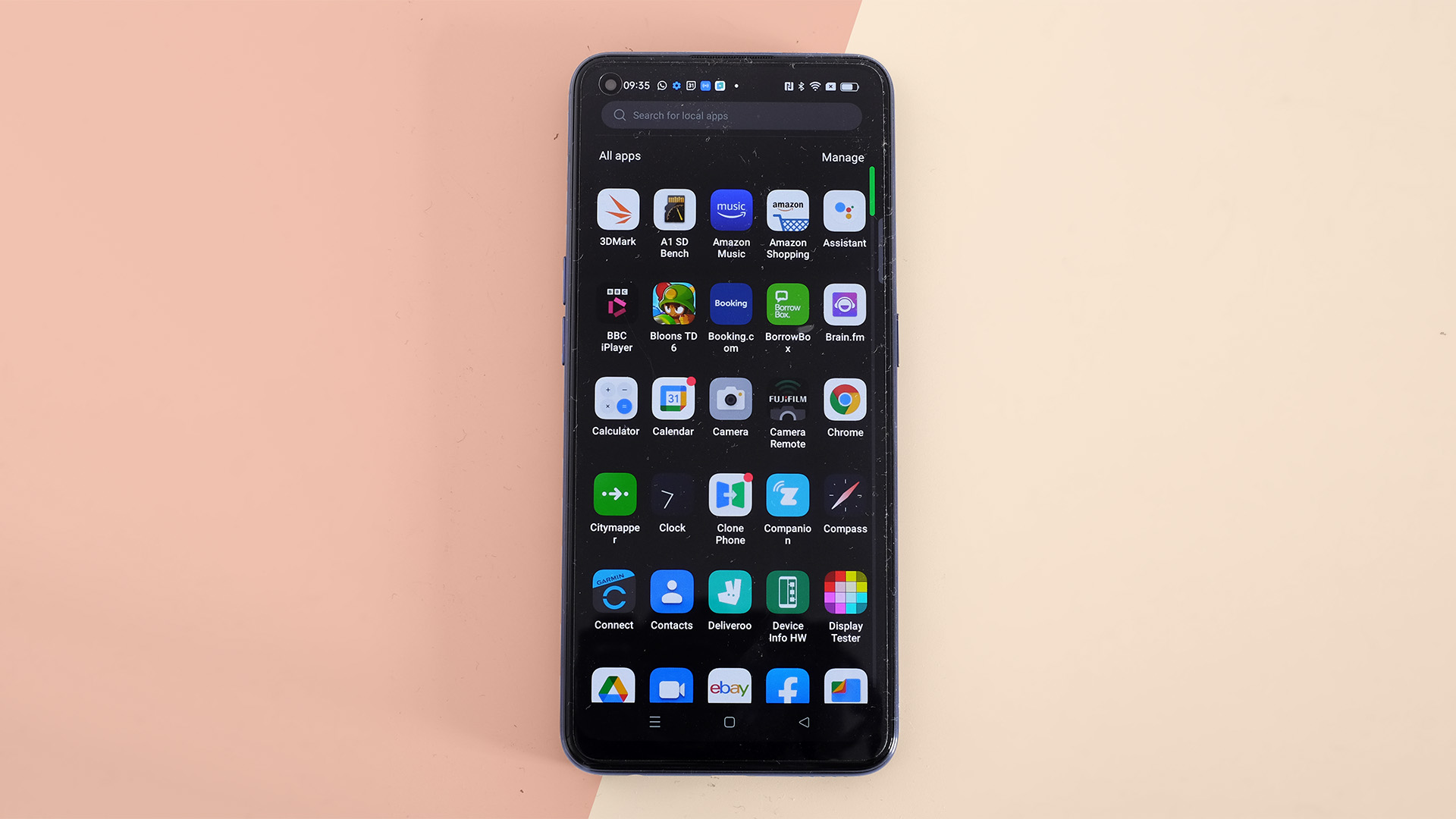
Note that the Oppo Find X5 Lite does come with a few potentially unwanted apps pre-installed, though. These are Amazon’s Music, Video and Shopping apps, TikTok (or at least, we don’t recall installing it) and an uninspiring game called Tile Master 3D. These should probably be uninstalled on day one, unless you subscribe to Amazon’s services.
There is an interesting Oppo-made inclusion in O Relax, though. This offers an array of relaxation and concentration soundscapes based around ambient sound – various shades of white noise. It also includes sounds recorded in various spots in Tokyo, Reykjavik, Bangkok, Shenzhen and Beijing – the bustle of a city intended to occupy your mind, so you can “get in the zone” more easily.
It’s the first manufacturer-made app in a while that we’d actually consider trying out regularly. However, it isn’t too great in a technical sense, with the streams taking an annoyingly long time to load. Still, we’re down with the concept and intent – which isn’t something we can say too often about this sort of app.
The Oppo Find X5 Lite offers 256GB of storage, so there’s plenty of room to overshadow these pre-installed bits with your own apps.
- Software score: 3/5
Oppo Find X5 Lite: battery life
- Fast 65W charging
- Good stamina for a 4,500mAh phone
- No wireless charging
The Oppo Find X5 Lite includes a 4,500mAh battery, 500mAh lower capacity than the mid-range standard of 5,000mAh, likely as a result of Oppo aiming for a slim and light design with this particular model.
However, the device outlasts many phones of this capacity, meaning stamina just isn’t a significant worry for day-to-day use. The device made it to bedtime even during a heavy day of testing, which included a bunch of YouTube streaming and a 20-minute gaming stress test, with typically around 25-30% charge left on an average day.
We can thank a couple of features for this fairly good result. The Oppo Find X5 Lite’s 90Hz screen may not sound that impressive in 2022, but it’s likely to be less of a drain than a 120Hz panel.
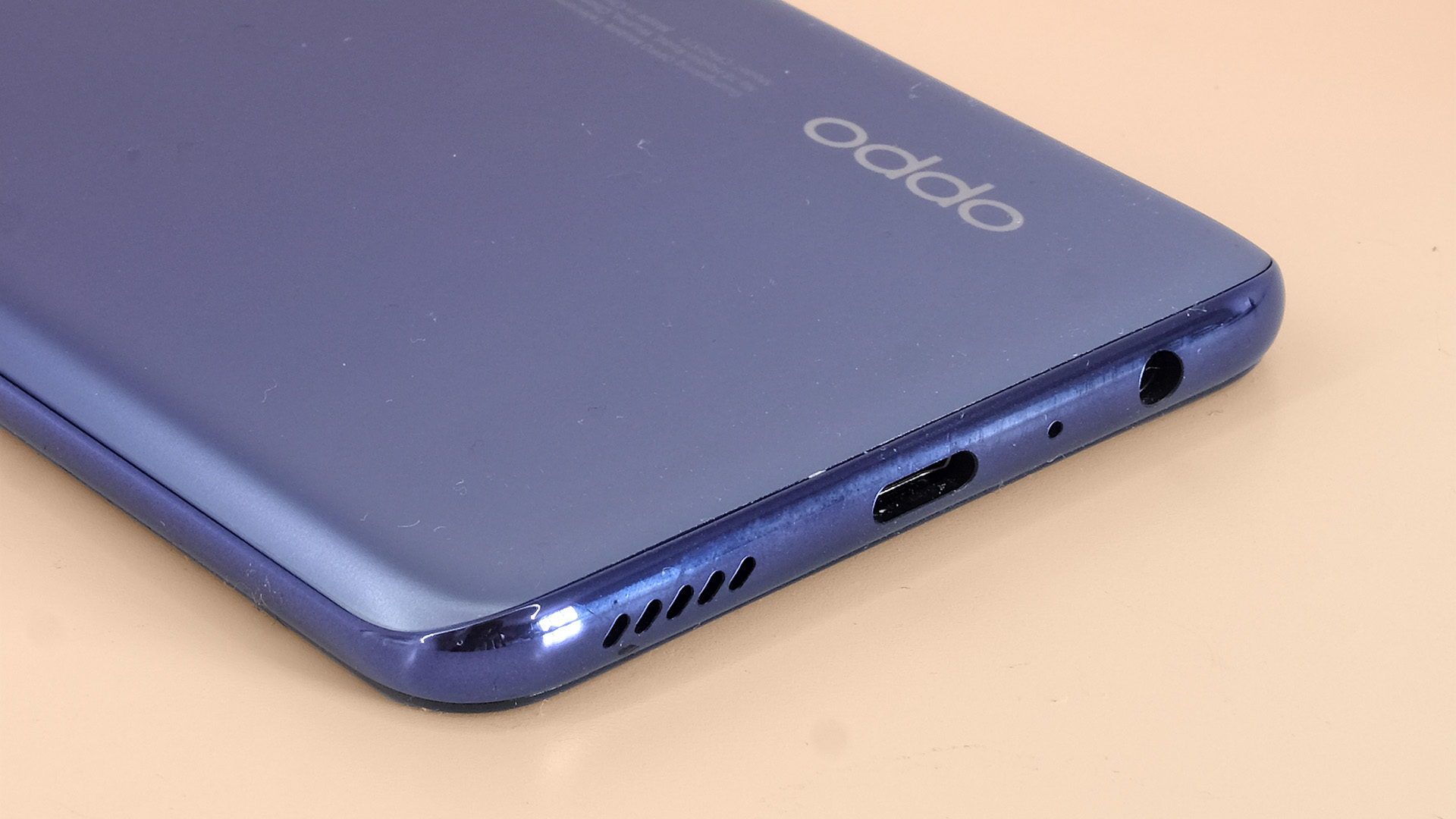
The panel’s just-decent peak brightness outdoors will help, too. The unremarkable power of the processor will stabilize drain, too; the Dimensity 900 just can’t rev quite as hard as a Qualcomm Snapdragon 8 Gen 1, for example.
Charging is fast, too: with a 65W charger, the phone can get to 60% in 15 minutes, 96% in 30 minutes, and 100% at the 33-minute mark. You’ll need to use the correct cable to see this speed, but it makes a 10-minute top-up a truly effective insurance policy before a night out.
The Oppo Find X5 Lite doesn’t offer wireless charging, which is a common omission at this level. Ultimately, though, it wouldn’t be all that appealing if it were to trundle along at ~10W anyway.
- Battery score: 4/5
Oppo Find X5 Lite scorecard
| Attributes | Notes | Rating |
|---|---|---|
| Design | The Oppo Find X5 Lite has a pleasant finish, but it doesn't feel expensive. | 3/5 |
| Display | The Oppo Find X5 Lite's screen has good colors but it could be brighter. | 4/5 |
| Performance | Day-to-day performance from the Find X5 Lite is solid, but easily beaten at this price. | 3/5 |
| Camera | The Oppo Find X5 Lite's cameras offer tasteful image processing, but its secondary lenses aren't special. | 4/5 |
| Battery | The Oppo Find X5 Lite has good stamina and charges quickly. | 4/5 |
| Software | Oppo's software is inoffensive, but the Find X5 Lite is stuck on Android 11. | 3/5 |
| Value | While the Oppo Find X5 Lite isn't expensive, some rival handsets offer better value. | 3/5 |
Should you buy the Oppo Find X5 Lite?

Buy it if...
You want a light, easy-to-handle phone
The Oppo Find X5 Lite is thinner and lighter than most mid-range phones, and its reasonably narrow frame makes it easy to handle.
You value a headphone jack and expandable storage
Many of the Oppo Find X5 Lite’s rivals don’t feature a headphone jack or expandable storage, which is quite typical in non-entry-level Android phones. Here, you get both – a refreshing change in 2022.
You value fast-charging
The Oppo Find X5 Lite charges far more quickly than mid-range iPhones and Samsung handsets. Its 65W adapter takes the battery from flat to 50% in under 15 minutes.
Don't buy it if...
You’re a gamer who values performance
While the Oppo Find X5 Lite runs just fine day-to-day, you can get far more powerful phones at this price. This impacts the visual settings you can use in higher-end games, so they simply won’t look quite as good played on this Oppo.
You want a phone that feels expensive
The Oppo Find X5 Lite’s “Glow” finish looks good, but it has a plastic rear. This, and the cheap-feeling haptics system, means you can pick up a more premium-looking device for a similar price.
You demand the best value around
While the Find X5 Lite isn’t poorly priced, the number of slightly better-spec'd rivals at the price is difficult to ignore. Samsung offers a higher refresh rate screen in the Galaxy A53 and OnePlus’s Nord 2T delivers a better CPU and glass rear. This Oppo can’t quite compete in the tech-per-dollar stakes.
Also consider
If this Oppo Find X5 Lite review hasn't sold you on the phone, here are some alternative handsets that you might want to consider.
Samsung Galaxy A53
Samsung’s Galaxy A53 has a slightly weaker processor than the Oppo Find X5 Lite. However, it does have a 120Hz display, stereo speakers, water-resistance and a more capable camera array. The macro and ultra-wide cameras are higher-res, the main camera has OIS, and there's a dedicated depth sensor, too.
Check out our Samsung Galaxy A53 review
OnePlus Nord 2T
Not surprisingly, the value-driven OnePlus packs more in for slightly less money. It has a much better processor, an improved primary camera sensor, and a rear glass panel that feels more premium than the plastic back of the Oppo Find X5 Lite. However, it doesn’t have a 3.5mm headphone jack or a microSD card slot.
Check out our OnePlus Nord 2T review
Realme GT Neo 2
This phone is a good alternative if you’re put off by the Find X5 Lite’s so-so processor. It uses the excellent Snapdragon 870, an updated take on an older flagship Qualcomm chipset, delivering better gaming power than the Dimensity 900. Its screen is a higher-spec panel, too. Again, you trade away the headphone jack and microSD card slot, however.
Check out our Realme GT Neo 2 review
First reviewed: June 2022

Andrew is a freelance journalist and has been writing and editing for some of the UK's top tech and lifestyle publications including TrustedReviews, Stuff, T3, TechRadar, Lifehacker and others.
